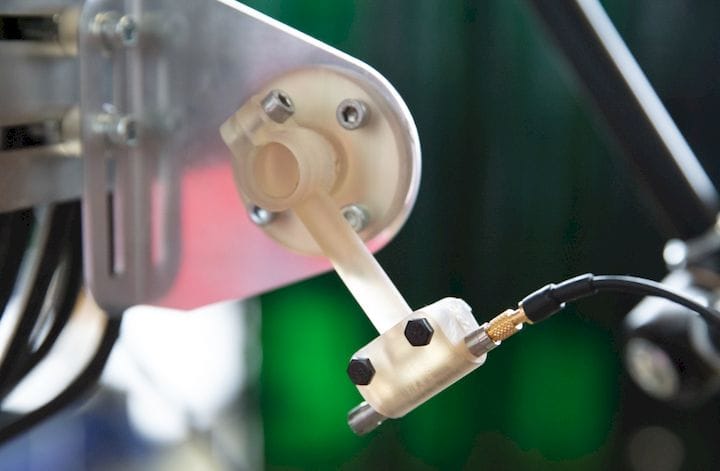![Sample prints using Formlabs’ new high-temperature 3D printing resin [Source: Formlabs]](https://fabbaloo.com/wp-content/uploads/2020/05/image-asset_img_5eb0a1377f3e5.jpg)
Formlabs surprisingly announced a new formulation of their high-temperature resin.
The company’s flagship product, the resin-powered Form 2 desktop 3D printer, is well-equipped with a number of resins usable for a variety of purposes. Among prototyping, casting and flexible resins, Formlabs also provides a high-temperature resin.
The company has had a high-temperature resin available for over a year, but the new formulation is based on feedback. They explain:
“Over the course of the last year since we first released this material, we’ve talked with a variety of engineers and product designers using it to better understand its applications, strengths, and opportunities to improve. We’ve seen that this is a very capable resin in the field, and the latest formulation is a direct result of customer feedback to make it even better.”
How is it better? It seems that it has an higher heat deflection (HDT) and has higher elongation to prevent it from breaking/cracking. Formlabs says the new HT resin has an “HDT of 238°C @ 0.45 MPa”. For those unfamiliar with this specification, it simply means that the material will remain rigid when encountering a force of 0.45MPa (mega pascals) until it reaches 238C. Thus using this material for structural applications is not recommended beyond that temperature.
High-temperature resins are actually very powerful in the world of 3D printing as they offer temperature resistance not found in other thermoplastic processes. Consider lowly PLA, a material very commonly used in extrusion equipment. It typically has an HDT of about 50C at 0.45MPa, far, far lower than Formlabs’ new material.
Even the highly touted ULTEM 9085 material from SABIC, said to be a high-temperature thermoplastic for use in extrusion systems, has an HDT of only 153C at a force of 1.8MPa.
What I’m getting at here is that the resin process has a significant advantage over the extrusion process when it comes to high-temperature materials.
In an extrusion process, the temperature of the hot end by definition must exceed the HDT of the extruded material. Thus you will often see machines with upgraded components ready to handle the higher temperatures. It’s because the temperature resistance of the extruded material must literally match the hot end temperature.
Meanwhile, in a resin system there are different processes at work. The liquid photopolymer is solidified by light, and it is not a heat-driven process. In other words, you can produce high-temperature-resistant objects on a resin 3D printer without having to hit high temperatures.
Thus on a Form 2 or other resin 3D printer it is possible to 3D print high-temperature objects easily with the right kind of resin. These high-temperature objects can take on different applications than can be tackled by “cooler” objects. Personally I’ve 3D printed injection molds on a Form 2 with their older high-temperature material and used them successfully.
That’s one of the interesting applications of high-temperature resin: the production of injection molds for lower-temperature materials. It’s vastly less expensive to 3D print a mold than it is to have one professionally milled in metal using traditional approaches. This is an excellent way to test a concept before committing to the expensive of metal mold production.
And of course, any application involving high-temperature contact is also suitable for this type of resin, including these, as Formlabs explains:
“Functional testing of prototype parts that come into contact with high heat can prove challenging, as many prototyping materials deform at higher temperatures. Reduce costs and iterate faster during every stage of product testing by 3D printing fully dense, watertight parts with low absorption that can withstand direct contact with hot liquid or steam.”
They suggest kitchen appliances, cosmetic encapsulations and millifluidic devices are all possible target applications for HT resin.
Formlabs recently partnered with Google’s or Advanced Technology and Projects group (ATAP) to use the new resin for a project with peculiar requirements.
This application involved the creation of a part that had to survive being overmolded in an injection molding process at 250C. ATAP says they saved a huge US$100K by using the 3D printing process rather than traditional approaches, as well as completing the work much faster.
Resins are a very powerful material medium for 3D printing applications, and Formlabs is trying to exploit that capability through the use of innovative resins like the new HT formulation.
Via Formlabs











A research thesis details the incredibly complex world of volumetric 3D printing. We review the highlights.